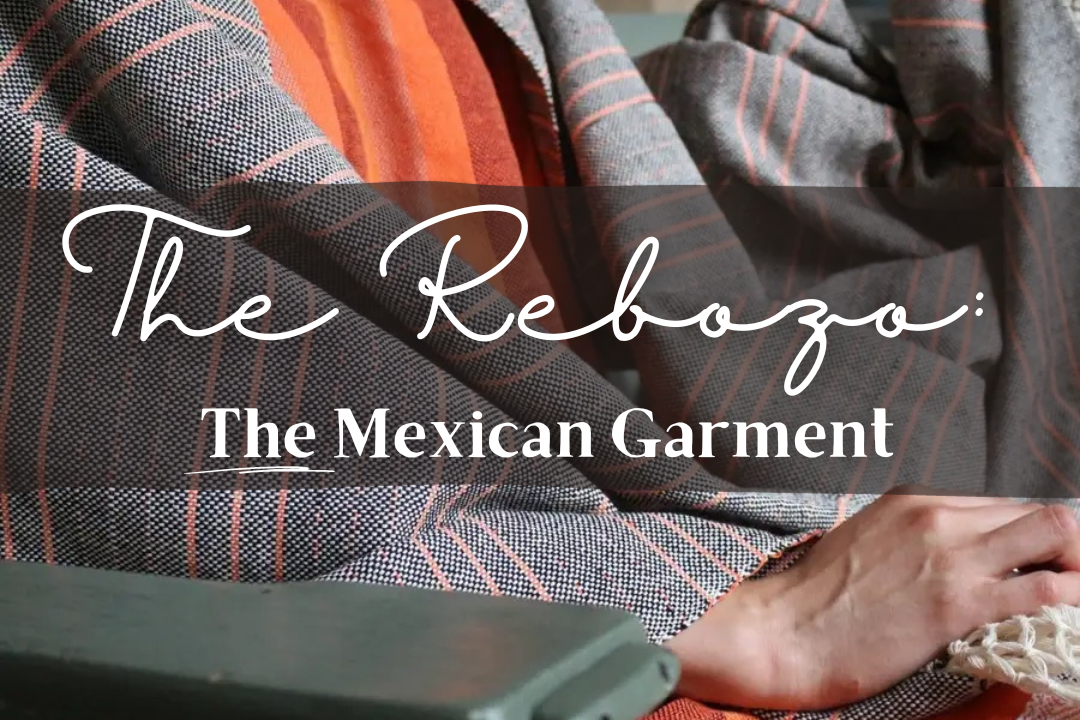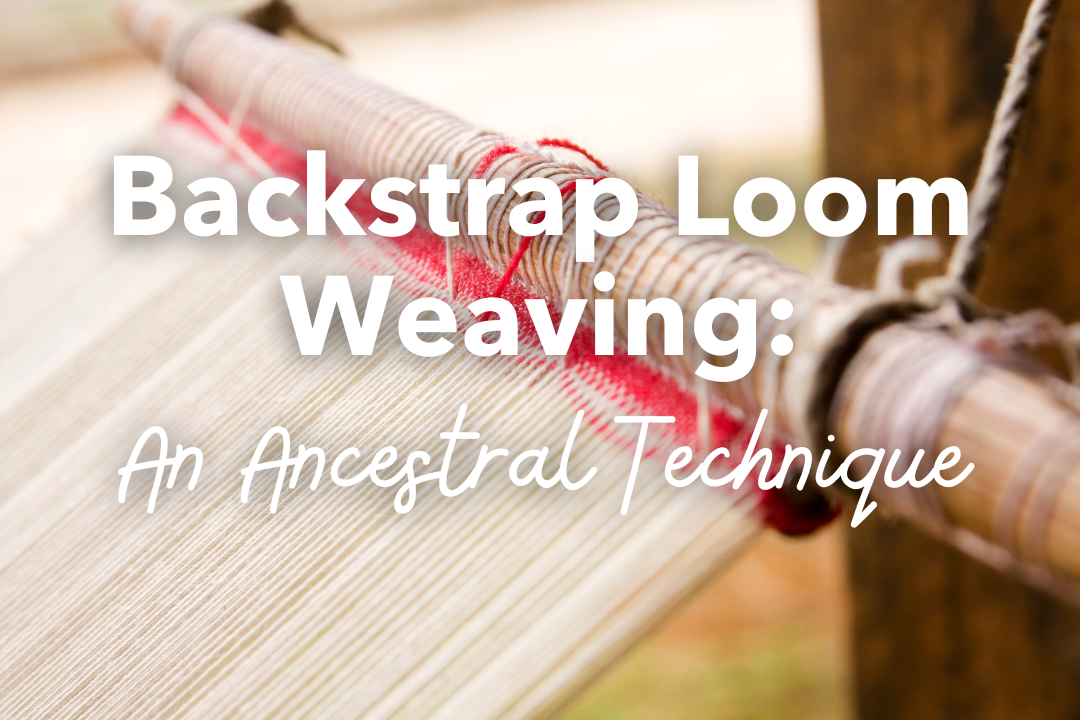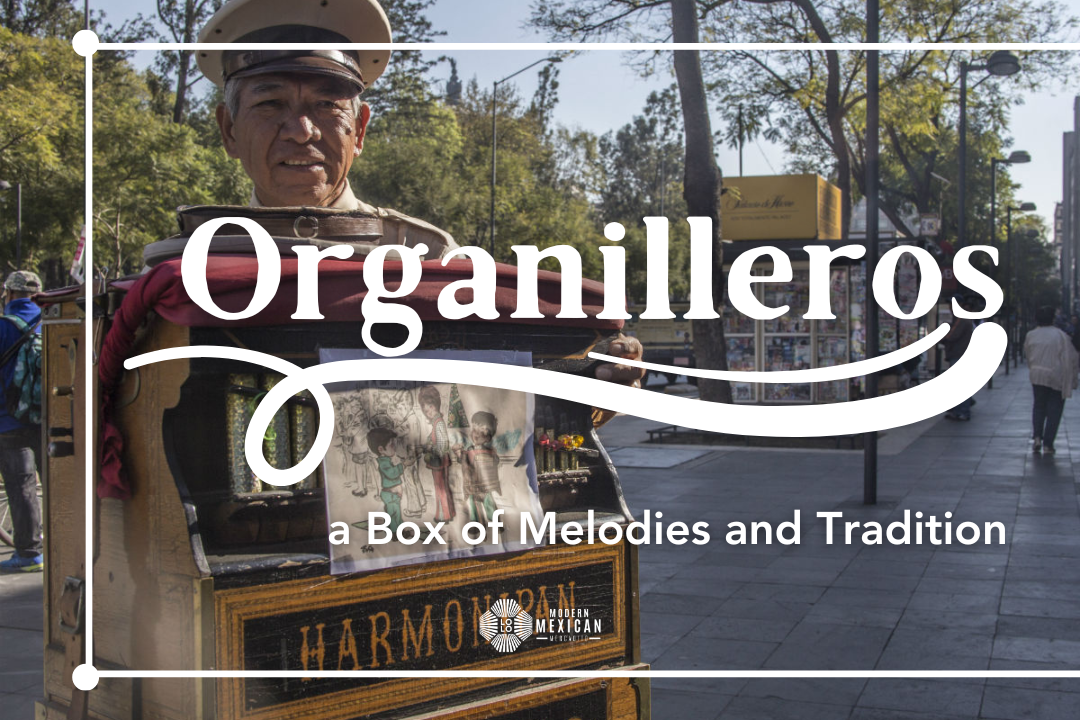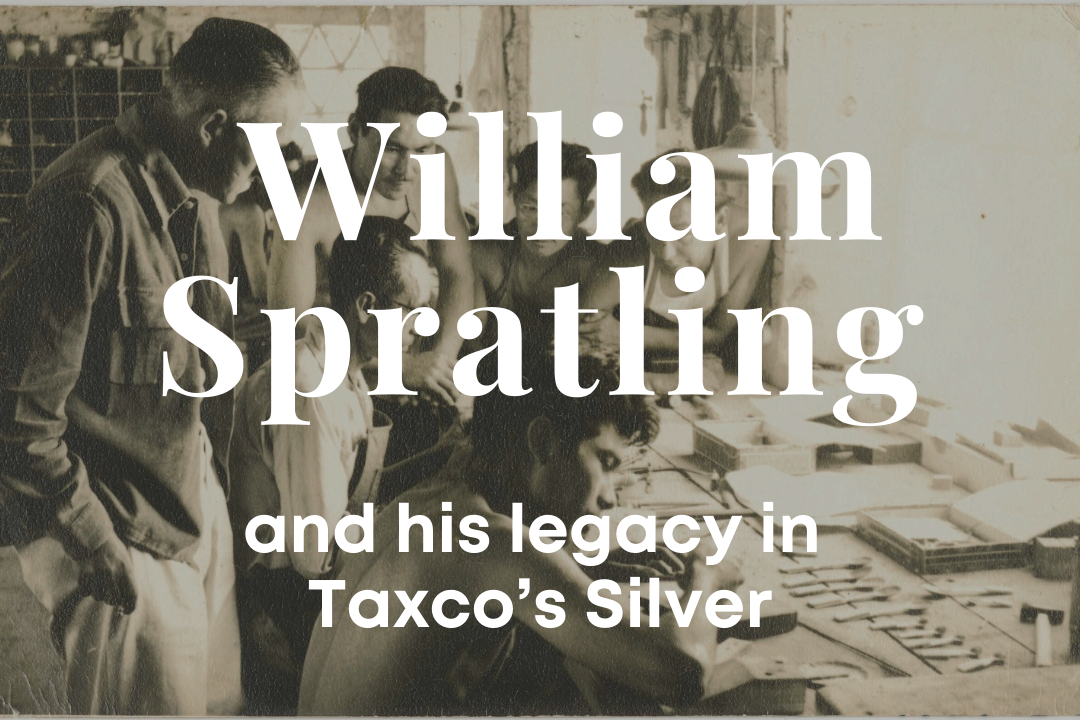The rebozo isn't just a piece of clothing in Mexico; it's a part of the country's soul. Think of it like a beautiful scarf, but with a story woven into every thread. It's a symbol of Mexican traditions and a vibrant display of the country's history and culture.
The rebozo is versatile in its use: it can be worn as a garment to keep warm, used to carry babies and goods, and even employed in certain traditional dances and rituals. In today's blog, we are embracing the cold weather and take on a journey through the history and meaning of the rebozo, discovering how this piece has transcended its functional role to become an icon of Mexican identity and pride.

The Origin of the Rebozo
This long, flat garment, similar to a shawl or scarf, must have come from somewhere, but where? There are several theories about its birth. Although its origin is uncertain, it is believed that it may have Spanish, oriental, pre-Hispanic or even Arab influences.
However, many maintain that the origin of the rebozo is Spanish, or rather that it came to America from Spain, since the word "rebozo" is defined as a garment to cover the muzzle (bozo, in Spanish), which could be related to a mantilla or tapa. On the other hand, an origin has been proposed in the Arab world, in garments such as the alhareme or the almaizal, headdresses used by Muslim women during the time of Islamic rule over Spain. And, of course, the possibility of a pre-Hispanic origin has also been discussed, relating it to the tilma, ayate, Ixtle, and the mámatl, garments used by indigenous cultures before the arrival of the Spanish.
One theory we found interesting is that the rebozo may have been influenced by Filipinos through the route of the Manila Galleon, which connected Asia with Mexico arriving at the port of Acapulco.
What we do know is that the rebozo as we know it today is a product of the cultural fusion of the colonial era. Its birth, debated between theories of different influences, shows us the rich cultural mix of Mexico. More than its uncertain origin, the rebozo has become a powerful symbol of identity for Mexican women and, if we look at its uses, we can see a glimpse of Mexico’s history written into it.

The Rebozo Through Time
There is no doubt that the rebozo, after the Spanish conquest, became an essential garment in the lives of women in Mexico. As we mentioned initially, historically, the rebozo was used for multiple practical purposes in the newly-invaded Mexico. Women used it to carry babies and goods, as protection from the sun and cold, and also as a form of modesty in church. This multifaceted use of the rebozo reflects its importance in the daily lives of Mexican women of different social classes and races.
However, during the Mexican Revolution, the rebozo took on a powerful new meaning. The revolutionary women, known as Adelitas, adopted this garment as an essential part of their clothing, not only for its usefulness but also as a symbol of their bravery and resistance. Adelitas and soldaderas (from the Spanish soldada) used the rebozo not only to protect themselves from the weather and as a fashion accessory, but also to transport ammunition and other supplies necessary for the fight.
This change in the use of the rebozo transformed its perception, elevating it from an everyday garment to an emblem of female struggle and empowerment in Mexico. Its presence during the revolution marked an important point in the history of the rebozo, highlighting its versatility and its ability to be a symbol of strength and resistance in times of change.
As time went by, the rebozo also became a means of personal expression and style. Its presence in fashion and art is palpable, as demonstrated by its use by iconic figures such as Frida Kahlo and María Félix, who wore it with pride on various occasions, showing it as a symbol of elegance, strength, and cultural heritage. These moments have been immortalized in photographs and portraits, making the rebozo much more than a garment: an emblem of Mexican femininity and resistance.

In modern times, the rebozo continues to have a strong presence, being used as a symbol of social and political movements. For example, Zapatista women in Chiapas have adopted it as part of their clothing, highlighting their commitment to their cultural roots and their fight for indigenous rights and autonomy. In the United States, the Chicano movement has embraced the rebozo as a symbol of unity and cultural resistance, strengthening ties to its Mexican roots and showing its relevance in a broader context of identity and activism. In addition, the rebozo has been integrated into various cultural practices, such as traditional medicine and maternity rituals.
Rebozo as an Artisanal Craft
The rebozo, more than a garment, is an artistic expression that represents a crucial source of livelihood for many Mexican artisans especially those from indigenous communities.
Each region of Mexico has its unique style and technique for creating rebozos. For example, in Tenancingo, they are famous for their "ikat" rebozos, where the threads are dyed before weaving, creating complex and vibrant patterns. In Oaxaca, rebozos are notable for their use of pedal looms, a technique that allows for the creation of detailed designs and a durable texture. In other places such as Michoacán or Aguascalientes, the deshilado (or fraying) technique transforms shawls into delicate works of art. Meanwhile, in Acatlán, Guerrero, rebozos stand out for their flowers embroidered in silk threads, a vibrant expression of local culture.

For us at Lolo we cannot close an exploration of what we believe to be the most traditional and iconic Mexican garment without emphasizing how the making of rebozos is a tradition that remains crucial to the economy and culture of these artisan communities. Through their work, artisans not only earn their livelihood, but also preserve and enrich Mexico's cultural heritage. The rebozo, therefore, is a thread that connects the past with the present, demonstrating how traditional art can remain relevant and valuable in the modern world.
Why Call it Rebozo?
Although some people call this "Mexican shawl", the name "rebozo" which some argue is derived from the Spanish verb "rebozar," meaning to cover or wrap oneself. Beyond its function, this term is specifically tied to the cultural and historical context of Mexico and reflects the unique characteristics of the garment, including its weaving techniques, patterns, and uses, which differ significantly from those of shawls in other cultures.

While a shawl is primarily used for warmth or as a fashion accessory, a rebozo has multiple functions in Mexican culture. It can be used as a garment, for carrying babies and goods, and even in traditional ceremonies and dances. The term "rebozo" encapsulates this versatility and cultural significance.
Using the term "rebozo" for us honors and recognizes its significance in Mexican society. It is a way to preserve and promote the traditional practices and heritage of Mexican communities, especially those of indigenous descent. It's a form of respect and recognition for the artisans and the cultural legacy they carry forward.
Do you agree?
----
So, what do you think? Did you know all of this about Rebozos? Where you familiar with its history? Would you like to read more articles like this one? What else would you like for us to highlight about our cultura? Let us know in the comments below!
Also, don't forget to subscribe to our newsletter where we make sure to share this and many more artisanal techniques, artisan's stories, recipes, and content of interest so that you are 24/7 on the loop! We also make sure to give our familia of subscribers exclusive promotions, gifts, first-hand look at all new products and, of course, these articles that we love to write for you all!









2 comments
Ali Shair
It’s amazing
Ali Shair
It’s amazing